Secret buying guide what no one tells you – Best water purifier
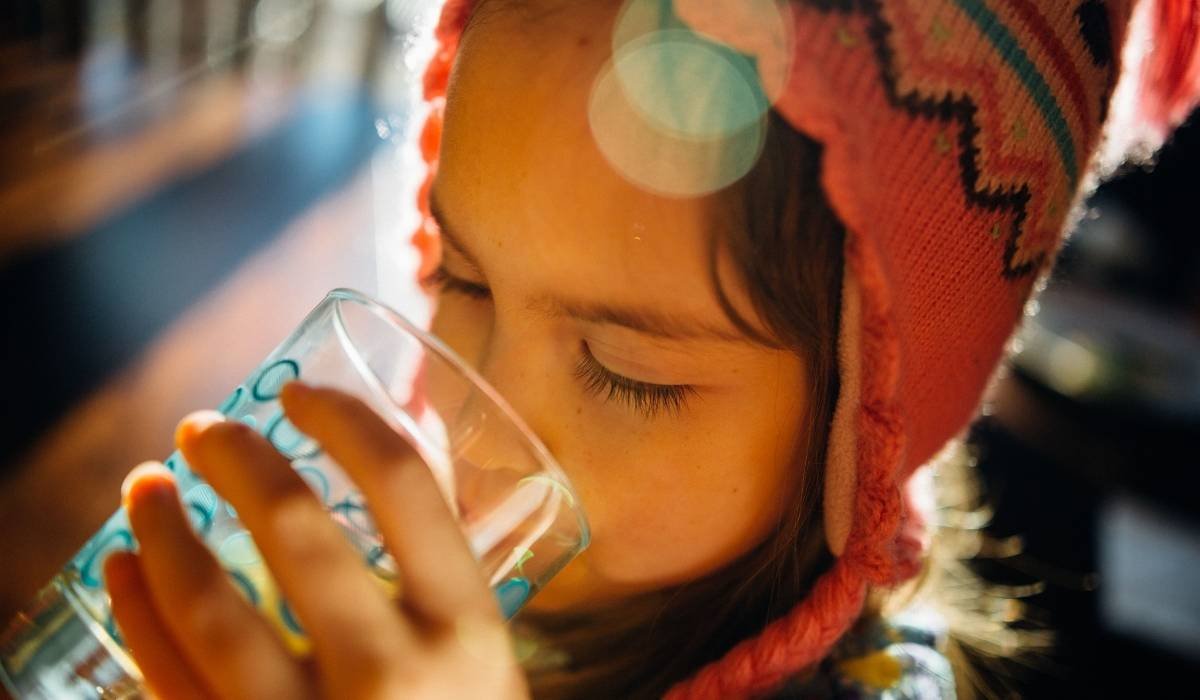
You are reading this article for the buying guide of the best water purifier. So now it is confirmed that you have decided to purchase the best water purifier. OK, it is the right decision.
Here we will give you the step by step water purifier buying guide so that you can purchase the right water purifier for your home.

Suppose you purchase a wrong water purifier by merely falling into the snare of different online listening or faulty offers provides by some biased earnings executive.
In that case, it will not only mess up your hard-earned cash but also interrupt your reassurance.
And above all, an incorrect water purifier will likely immediately influence your health & fitness. It might be helpful for you to keep in mind a few essential factors discussed below while purchasing a water purifier for your residence.
Before we talk about the various kinds of water purification technology and one out of those suits your requirements, it’s necessary to understand the different sorts of impurities found frequently in drinking water.
Because after knowing this, we’ll have the ability to understand the demand for such varied kinds of water purifiers.
Different sources of water
Water is considered as among the most crucial and precious resource in the world.
Just 3 percent of the water found in the world is freshwater, and this is acceptable for human consumption.
Survival without water isn’t feasible. About 70 percent of this human body is composed of water. Additionally, all the plants and animals need water for survival.
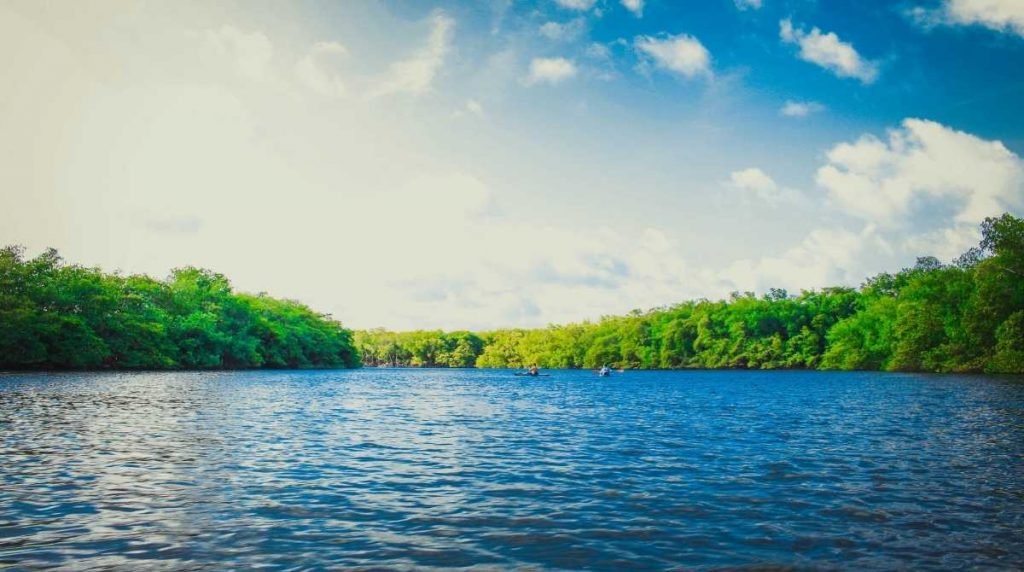
Water sources available on the earth are largely of two kinds, namely surface water and groundwater. Surface water supply comprises oceans, lakes, rivers, streams and reservoirs.
The principal supply of surface water is both rain and constant melting snow from the hills.
Water found underground in soil & between the stones is called groundwater. Groundwater is normally the principal supply of water for the majority of the planet’s inhabitants.
We Indians are lucky that there’s still sufficient groundwater available within our nation.
However, the most usual sources of drinking water of India are Municipal Corporation Supply, Borewell, Groundwater, Rivers, Lakes & Ponds.
Every source of water supply includes several kinds of impurities, and so requires different types of purification technology.
Beneath you may get comprehend why understanding the origin of the water is quite necessary.
Types of impurities in drinking water
Types and amounts of impurities found in drinking water all depend upon the source of water from which is water supply to your home.
Most common sources of drinking water are: lakes, rivers, bore wells, harvested rainwater, municipal corporation supply, etc.
Water that appears visually clean can comprise many hazardous pollutants, i.e. poisonous chemicals, viruses, bacteria, excess chlorine & dissolved salts.
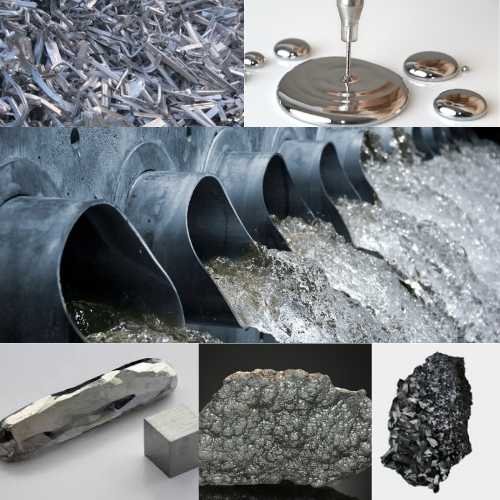
Types and amounts of impurities found in drinking water all depend upon the source of water from which is water supply to your home.
Most common sources of drinking water are: lakes, rivers, bore wells, harvested rainwater, municipal corporation supply, etc.
Water that appears visually clean can comprise many hazardous pollutants, i.e. poisonous chemicals, viruses, bacteria, excess chlorine & dissolved salts.
Water coming from lakes and rivers usually have low TDS level.
At the same time, water from sources such as groundwater and borewell generally have high TDS level and can also include harmful chemicals, such as lead, arsenic and mercury.
Generally, two types of impurities present in drinking water, i.e. visible contaminants like sand, mud and hidden pollutants like microorganism, toxic chemicals, and dissolved salts.
Let us discuss some of the frequently observed impurities in drinking water from different sources.
| Water Sources | Visible Impurities | Hidden impurities | Impression on drinking water |
| Municipal corporations Water Supply | Dirt, sand, mud, & corrosion | Bacteria,Viruses,& Chlorine | Waterborne diseases, bitter taste, & muddy appearance |
| Borewell/Groundwater | Mud, Sand | Toxic chemicals and metals like Lead, Arsenic, Mercury, & Fluoride. Dissolved Salts such as Calcium, Magnesium, Sodium, Potassium, etc | Hardness of water and scale formation |
| Rivers | Clay, sand, mud, & silica. | Toxic chemicals, Harmful bacteria, Salts like calcium, magnesium & sodium in excess amount, & impurities like Lead, Arsenic, Fluoride, Mercury, etc | Hardness & turbid appearance |
| Lakes and ponds | Mud, sand and algae | Bacteria, viruses, algae, protozoa and fungi at elevated levels. | Filthy smell |
Micro-organic impurities, such as germs, viruses, cysts & protozoa, neither be viewed nor leaves any recognizable odour or flavour.
However, suppose any of your relatives often suffer from waterborne diseases, such as illness, Typhoid, diarrhoea etc..

In that case, it’s an unambiguous indication of biological contamination.
So to overcome the problem of the waterborne disease, there is a requirement of the best water purifier for your home according to impurities found in water coming from different water sources.
Level of TDS in water
TDS level refers to the amount of total dissolved solids in water.
Dissolved solids can be calcium, magnesium, potassium, sodium, lead, arsenic, fluoride,mercury and some inorganic solids in water.
It is necessary to have the right amount of TDS level in drinking water because if TDS is low, that means water is missing some essential minerals in water and water becomes unsafe and unhealthy for the human body.
Suppose TDS level is high in the water. In that case, it is sure that water contains harmful impurities like lead, arsenic, fluoride in water which makes water impure, insecure, and dangerous for the body.
Total Dissolved Solids (TDS) is considered as the degree of hardness and is measured in units of Parts Per Million (PPM) or Milligrams per Litre (mg/L).
1 ppm = 1 mg/L
Water having TDS level varying between 150-350 ppm is regarded as soft water, but it probably may contain harmful chemicals.
Water having TDS level more than 450-500 ppm is viewed as hard water, and it surely contains toxic impurities and chemicals.
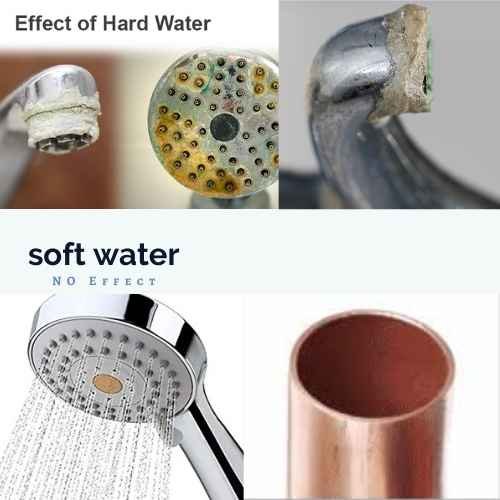
TDS level of water can be measured with the help of digital TDS meter.
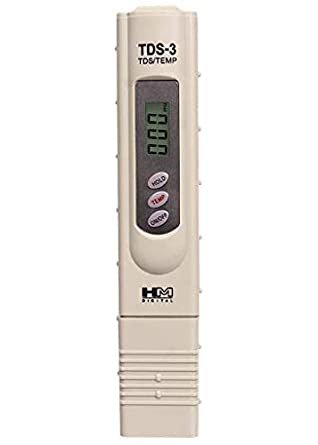
Which is the best water purifier according to different TDS levels ?
Now let us discuss different TDS levels of water & suitable water purifier according to it in the table below.
| TDS level | Rating of water | Check now on Amazon | Acceptability of water according to TDS level | Best water purifier |
| Less than 80 ppm | Poor | ——— | Water with this kind of a very low amount of TDS doesn’t include any vital minerals. It’ll be tasteless and unhealthy. It’s not a suitable selection. | At this level there is no need for a water purifier. |
| TDS 80-150 ppm | Good | Check now on Amazon | It’s an acceptable range. But in case you experience an RO water purifier in your home, be certain that the TDS level isn’t under 80 ppm. | UV water purifier is suitable. |
| TDS 150-250 ppm | Excellent | Check now on Amazon | This range is perfect. Hospitals generally have this level of TDS in their own water source. It’s Perfect for keeping cardiovascular fitness and body healthy. | UF water purifier is suitable if the water is muddy. UV+UF water purifier is suitable if water contains bacteria & viruses. |
| TDS 250-350 ppm | Acceptable | Check now on Amazon | Generally, Water supply in Indian homes has TDS levels between 250-350 ppm. It is also an acceptable level of TDS in water. . | UV+UF purifier if water is muddy & impurities are present. UV+RO water purifier is best if toxic impurities are present. |
| TDS 350-500 ppm | Good but may contain impurities. | Check now on Amazon | According to the Bureau of Indian Standards (BIS), the TDS level of water lies up to 500 ppm are acceptable and suitable for the human body. | RO+UV+UF technology water purifier is perfect. |
| TDS 500-800 ppm | Unacceptable | Check now on Amazon | This is an unacceptable level of TDS in water. Water contains toxic chemicals at this level. It is recommended to use RO purifiers with mineralizer tech. | RO+UV+UF with TDS controller/Mineraliser technology based water purifier is recommended. |
| TDS 800-1200 ppm | Unacceptable | Check now on Amazon | At this level of TDS, it is highly recommended to use the best RO water purifier with TDS controller or mineraliser technology. | RO+UV+UF with TDS controller/Mineraliser technology water purifier is must. |
| TDS 1200-2000 ppm | Never recommended | Check now on Amazon | This range is not acceptable for human consumption. But the very best RO+UV+UF+TDS controller/mineraliser water purifier can manage water having TDS up to 2000 ppm. | Only RO+UV+UF with TDS controller/Mineraliser water purifier is suitable. |
| TDS above 2000 ppm | Highly unacceptable | ——— | Domestic water purifiers are not used for this level of TDS. You need a water softening solution. | Water softening solution. |
We highly recommend that you should first check your TDS level of water before purchasing a water purifier so that you can buy it according to your need.
Important Note:-
In the above table, we have mentioned the rating of water at particular TDS level as excellent, good, best, etc.
But it is not sure water is pure in that case, it may contain harmful contaminants and dissolved impurities like toxic chemicals in water which is invisible and can pollute water.
All dissolved chemicals in water are hazardous for the body and can lead to a deadly disease.
So it is highly recommended to use multi stage RO+UV+UF water purifier with mineralizer technology because TDS level does not show the dissolved impurities, it only defines the level of dissolved solids in water.
Purification and Storage Capacity
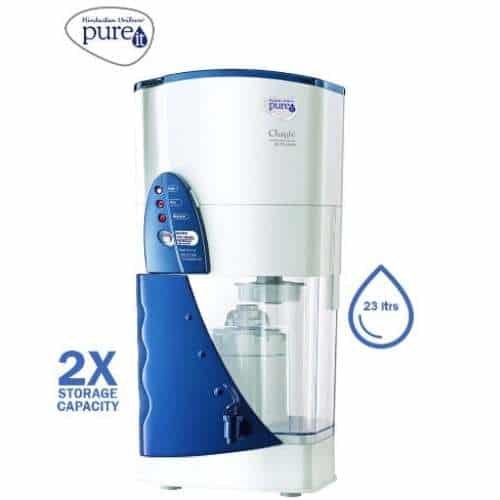
Purification capacity is the amount of water purified in an hour by a water purifier.
Many RO water purifiers come with an adequate purification capacity of 10 to 15 litres per hour, and this is a perfect range for maximum Indian Families.
Now almost all of the purifier comes with a storage tank.
Storage capacity can range between 7-12 litres.
It is an outstanding feature of water purifiers that allows you to get purified water even in the absence of electricity.
Water purifiers having 7 to 12 litres storage capacity is the ideal choice for India families.
Thus, knowing the requirements of your family and water drinking capacity of your family members, allows you to purchase the best purification capacity and storage capacity water purifier for your home.
Zero water wastage technology
It is essential to understand that all RO water purifiers waste much water.
For every litre of water purified, 650 ml of water is thrown out by the machine.
But there are some latest water purifiers available in the market that recover 50% of the input water.
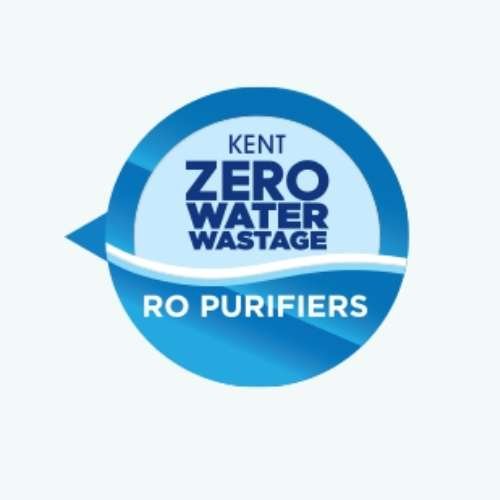
Now, most of the RO water purifier brands focusing on zero water wastage technology, i.e. an innovative technology which does not waste any amount of impure water as it re-circulates the impure water back to the overhead tank.
However, Kent has recently launched its product featuring zero water wastage technology.
Most of the purifiers store the waste water in another tank apart from the storage rank of pure water.
Thus, you can use that impure water for different uses such as clothing, washing, cleaning utensils, etc.
So it is very crucial for you to purchase that purifier which comes with zero water wastage technology or recovers the maximum amount of input water.
Warranty & After-Sales Service
The water purifier is a product which requires continuous maintenance.
It becomes highly crucial for brands to provide an excellent after-sales service and support for the convenience of customers.
So brands are more focussed on delivering the best after-sales services to customers.
But there are regions where some brands are unable to provide adequate services and support to the customers.
So it becomes crucial for you to go with that brand which provides the best sales after services and customer support in your locality areas.
Regarding warranty almost all the water purifiers come with 1-year warranty.
So we think that there is no issue regarding the warranty, but then also you must check the proper warranty of the products before you purchase it.
So all the factors mentioned above are very crucial, and you should keep these all points in mind while buying a water purifier for your home.
Now let us discuss different water purification technologies.
Different water purification technologies
Water purification technologies are of three types;- Reverse osmosis, Ultraviolet, & Ultra Filtration. Each technology has its advantages and pitfalls. Let us discuss one by one.
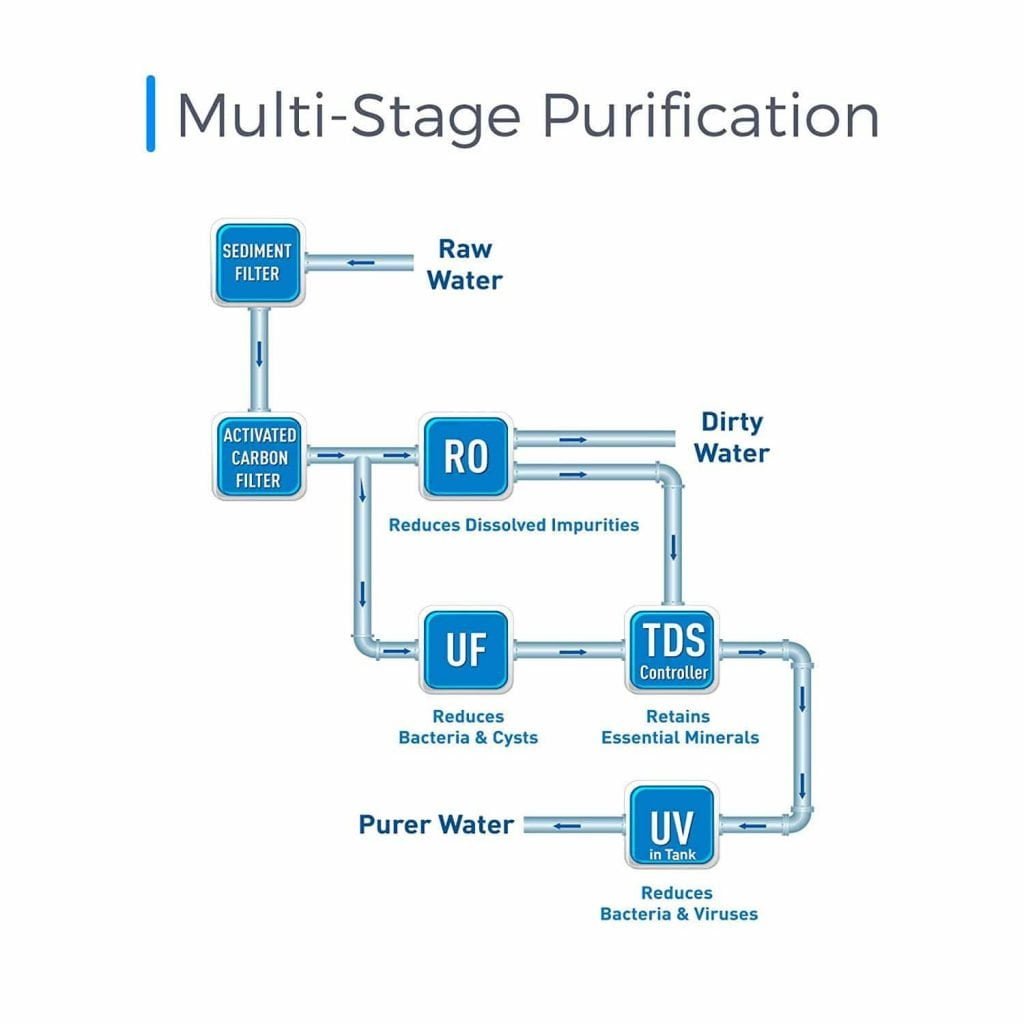
Reverse Osmosis (RO) purification technology
Reverse Osmosis is the highly recommended innovative purification technology which removes all the highly toxic dissolved impurities from the water and makes the water drinkable.
RO is the only purification technology which is capable of removing hazardous impurities like lead, arsenic, fluoride, etc from the water.
It is recommended when water having high TDS level and harmful dissolved impurities in it.

Reverse Osmosis, according to its name, does the exact opposite work of Osmosis.
In this process, water molecules are pushed from the higher TDS region to the lower TDS region with the help of external pressure applied by the water pump to reverse the original flow of water.
In this process, high TDS water is pumped into the RO chamber by applying high pressure, and inside the RO chamber, water is forced to move through the semi-permeable membrane.
When water moves through a semi-permeable membrane, maximum input water containing dissolved solids and toxic impurities remains behind as this water is not allowed to pass through it and is known as wastewater.
Water passed through semi-permeable membrane is known as purified water, but it also leaves essential minerals behind which is then added by mineraliser technology or by TDS controller.
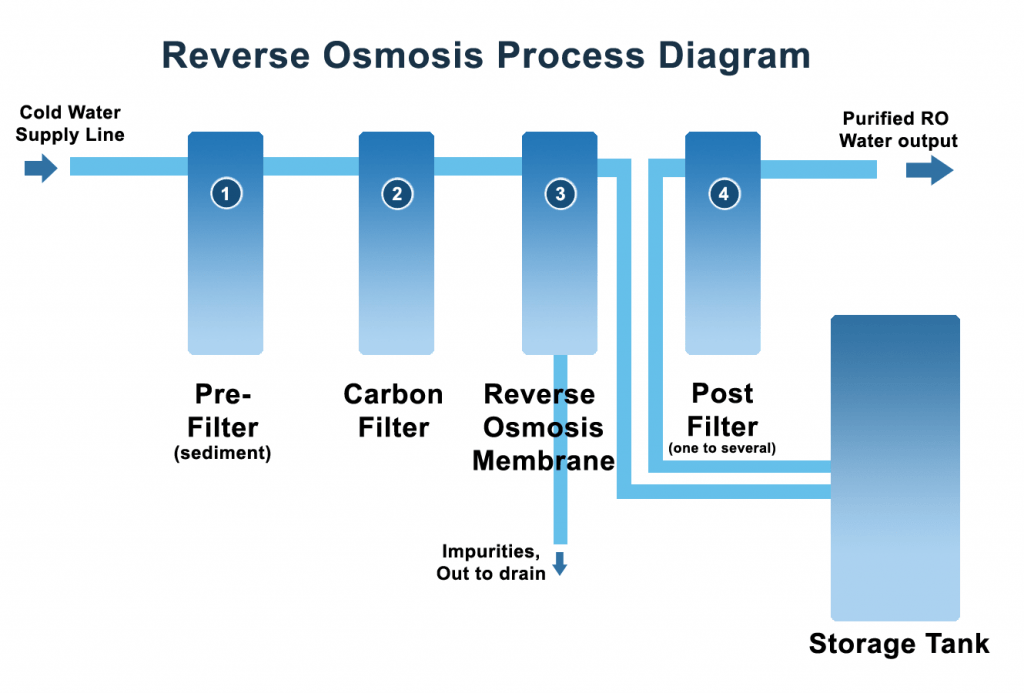
Limitations of RO technology:-
- Without electricity the RO process does not work, as electricity is needed for applying external high pressure through an electric pump on water molecules.
- During the RO purification process, there is a wastage of a large amount of water, i.e. For every litre of water purified, 650 ml of water is thrown out by the machine.
- Suitable only when TDS level of water is high and water includes toxic impurities in it.
Ultra-Filtration purification technology
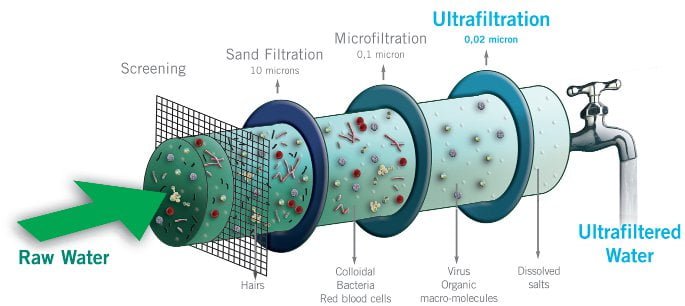
Ultra Filtration water purifiers are suitable only when the level of TDS is less in water, and the presence of undissolved solids & impurities is more.
UF technology uses semi-permeable membranes but with large pores of size ( ranging from 0.005 to 0.1 micron) as compared to RO.
UF purifiers do not remove dissolved impurities from the water as water can easily pass through these pores leaving behind undissolved impurities.
UF technology does not require electricity for running its process as water can pass through pores quickly using hydrostatic pressure applied on it due to the force of gravity.
Limitations of UF purification technology:-
- Cannot remove dissolved impurities from water.
- Suitable only when TDS level of water is low.
Ultra-violet (UV) water purification technology
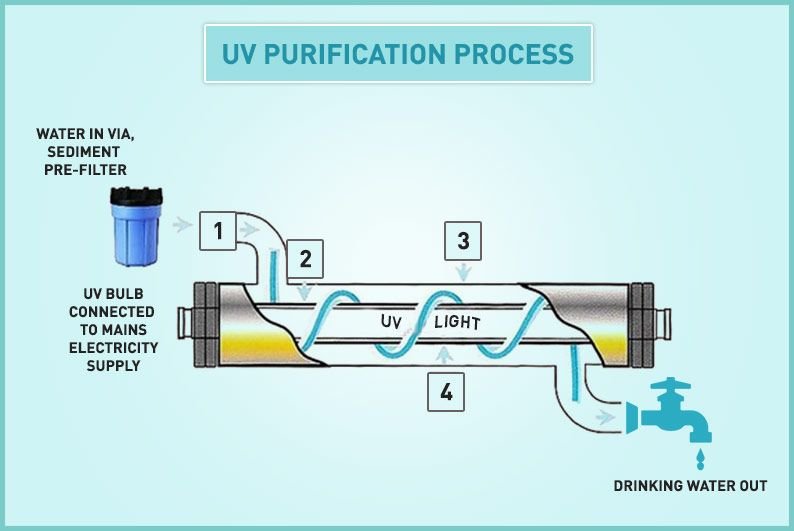
UV purification technologies are also suitable only when TDS level in water is low, and water does not contain any harmful dissolved or undissolved substances such as lead, arsenic, fluoride etc. because UV technology can not eradicate all these impurities.
UV technology uses germicidal ultraviolet rays for the purification of water.
When water passes through the UV chamber, high-intensity UV rays kill the bacteria & viruses in water, and the UV wavelength scrambles the DNA of living organisms in the water, so they can no longer reproduce and water becomes pure.
UV water purifier technology is also not able to remove both dissolved and undissolved impurities from the water as it only eliminates waterborne disease-causing bacteria and viruses from the water.
But UV+UF technology is a perfect combination of purification technology if water has a TDS level up to 400 ppm and does not contain any toxic pollutants in it like lead, arsenic, fluoride, excess chlorine etc.
Limitations of UV technology:-
- Cannot remove harmful dissolved & undissolved impurities from water.
- Requires electricity for working UV process.
- Cannot work with high TDS level of water
- Cannot clean dirty or muddy water.
RO vs UV vs UF
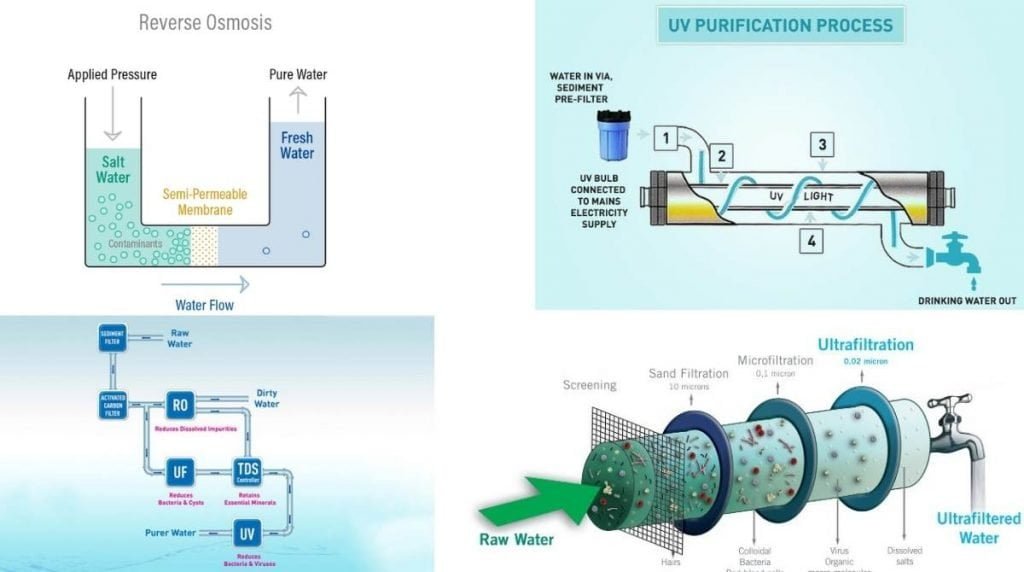
| Reverse Osmosis (RO) purifier | UV Purifier | UF Purifier |
| Electricity is required to run the RO process. | Electricity is needed to run the UV process. | Electricity is not required to run the process. |
| Can work with water from any source. | Purifiers consist of only UV technology that requires clean water. | Can not work with all sources of water. |
| Kills and removes the dead bodies of bacteria and viruses from water. | Kills bacteria and viruses from water, but does not remove their dead bodies from the water. | Kills and removes the dead bodies of bacteria and viruses from water. |
| Removes the dissolved toxic elements, chemicals, and salts from water. | Cannot remove the dissolved toxic elements, chemicals, and salts from water. | Cannot remove the dissolved toxic elements, chemicals, and salts from water. |
| RO purifier can operate with dirty muddy or turbid water. | UV purifiers can not work with dirty turbid or muddy water. | UF purifiers can work with dirty turbid or muddy water. |
| Works with high TDS, i.e. more than 500 ppm | Cannot work with high TDS, i.e. more than 500 ppm. | Cannot work with high TDS. |
Multiple purification stages of advanced RO water purifiers
All the advanced RO water purifiers available in the market include 6 or 7 multi-stages water purification processes.
Today, almost all the water purifiers available in the market use advanced water purification stages in the filtration process.
Let us discuss all of them step by step.
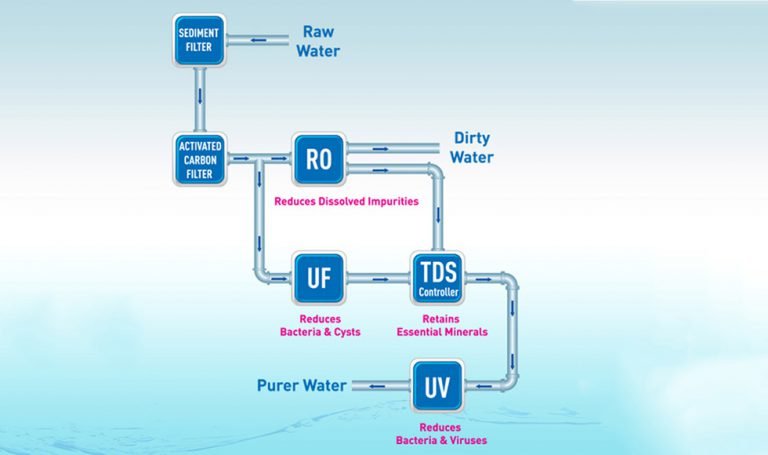

Personal Advice
Suppose you are living in the area where TDS level of water is more than 600 ppm.
Then, we recommend you to use an advanced RO water purifier which includes all the advance purification technologies.
Because, the water will definitely contain the toxic chemicals at this high TDS level.
If you are using only RO water purifier, then you are eliminating healthy essential minerals from the water and just consuming unhealthy water.
RO water purifier with TDS controller is not a good option if the TDS level is high because it can balance the pH of the water just by adding toxic chemicals also.
So, it is always recommended from our side to use mineralizer technology instead of TDS controller when the TDS level is high.
But, at low TDS amount, both TDS controller or mineralizer technology can also be used.
Final conclusion
In this water purifier buying guide, we have covered every necessary information that is must for you before you purchase a water purifier.
All the detailed information about various TDS levels of water and different purification technologies are covered in this guide.
After reading this guide carefully, it becomes straightforward & effortless for you to choose the right water purifier for your home.
If you have any doubt regarding water purifiers, then let us discuss below in the comment section.

Aditya Choudhary
Online Entrepreneur & BloggerAditya Choudhary is the founder of kitchenhubs.in and a digital entrepreneur, blogger, and world traveller.
Share article on:-
Recent Articles
In this article, we have provided a list of the best food processors available in…
In this article, we have provided information regarding the best wet grinders in India. The…
Are you getting frustrated after looking at too many mixer grinders or juicer mixer grinders…
In this article, we have provided a list of the best oxygen concentrators available in…
In this article, we have provided the information regarding the best kitchen chimney in India….



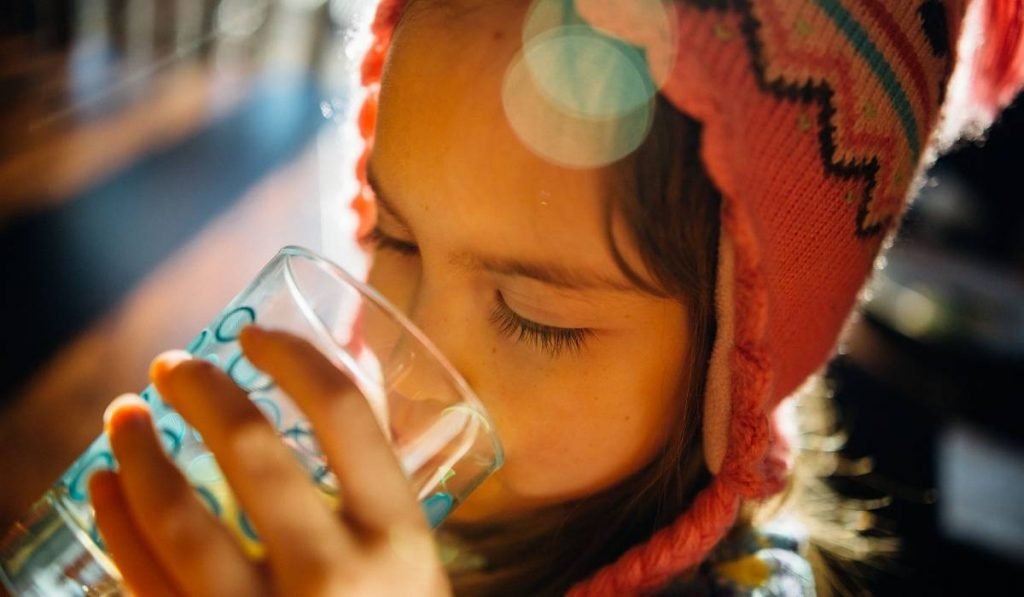

Try to suggest which company model we purchase.how we decide?
You can decide according to your need and factors mentioned in the article like TDS level. OK, We can mention specific product of particular brand which you can buy directly from there after deciding TDS level. Also refer this article 11 Best Water Purifiers in India: Reviews & Comparisons (2020)
Is there any good Indian Brand?
Yes. Kent, HUL, Livpure, Eureka forbes are all the best Indian brands. You can go with any one of them. For exact information please visit this article 11 Best Water Purifiers in India: Reviews & Comparisons (2020).
Yes, the quality of water we are getting now days is not too much good. So its better to use any water purifier. It saves you from many disease. Thanks for information.
Thank you so much dear. Keep reading our articles.
Hi Aditya,
Amazing article. Thank you for your valuable tips.Much needed information for me. very helpful. keep up the good work.
Thank you so much dear. Keep reading our articles.
Only wanna input on few general things, The website style is perfect, the content material is very wonderful : D. Dniren Ari Seymour
I was reading through some of your posts on this website and I conceive this site is really informative ! Retain posting . Briana Donnell Woodall
Thanks dear. Keep reading our articles.
We have all the necessary skills to go through our process several times. Shel Antonio Patnode
This paragraph is truly a nice one it assists new internet users, who are wishing in favor of blogging. Drusi Burch Gigi
Thank you so much dear. Keep reading our articles.
Very Nice Article.
Keep up the Good Work.
I am regular reader, how are you everybody? This post posted at this web site is in fact pleasant. Suzanna Sterling Schoenfelder
I cannot thank you enough for the article post. Much thanks again. Keep writing. Steffane Omar Cindee
Excellent, what a webpage it is! This website provides valuable facts to us, keep it up.| Aeriell Boote Melly
Appreciation to my father who stated to me on the topic of this web site, this website is really awesome.| Nicki Ethelbert Ajay